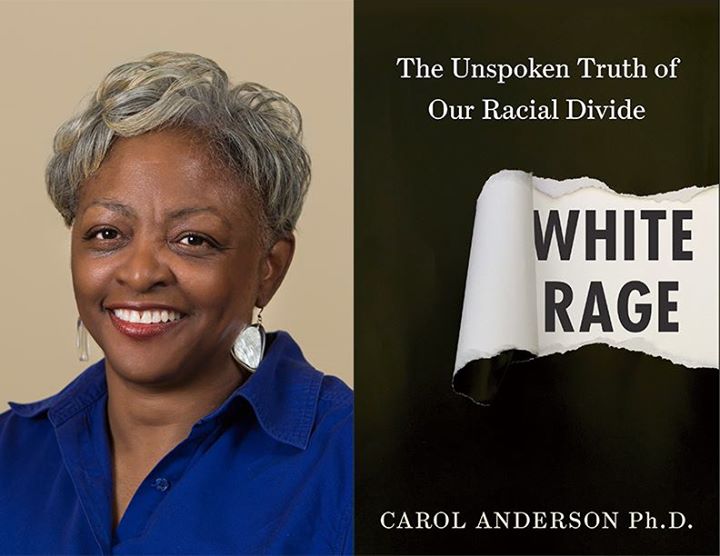At the end of Jewelle Gomez’s seminal feminist novel, The Gilda Stories, Gilda and her crew of badass queer vampires (because, of course) are faced with a dying planet Earth. Centuries of white supremacy and unbridled capitalism have wreaked havoc on human society. The wealthy have escaped off planet to colonize other worlds (because, of course) and Gilda’s squad, along those who are too poor to escape, are left behind to pick up the wreckage.
Sound familiar?
Maybe it’s just me, but the times we are living in make me want to scramble and, as my granny would say, “get my affairs in order.” So many things—the election, and its bevvy of undesirable choices, the state of the economy, the State’s rapacious desire for Black and Brown bodies, the fact that a gorilla (RIP Harambe) elicits more sympathy that the death of Mike Brown, Freddie Gray, or Sandra Bland, and the triumphant rise of Black resistance movements—make me alternately sick, fearful, and cautiously hopeful for the future.
Carol Anderson’s new book White Rage: The Unspoken Truth of Our Racial Divide engages these issues—well, except our boy Harambe. I first encountered Anderson’s thoughts on white rage in a 2014 op-ed that she wrote in the wake of Ferguson. She writes, “When we look back on what happened in Ferguson, Mo., during the summer of 2014, it will be easy to think of it as yet one more episode of black rage ignited by yet another police killing of an unarmed African American male. But that has it precisely backward. What we’ve actually seen is the latest outbreak of white rage. Sure, it is cloaked in the niceties of law and order, but it is rage nonetheless.”
Where is the lie?
I had the pleasure of interviewing Carol Anderson and picking her brain about her book. She defines white rage not simply as the in-your-face overt tactics of white supremacists, such as the KKK, but a range of seemingly more covert policies that frame and flank our political life. She told me, “White rage is that very cool, calculated policy thinking that shows up when African Americans advance and gain social capital. It swoops in to neutralize the gains.”

Watching the Ferguson protests, or rather how the media talked about Ferguson, was a turning point for her: “All the pundits had the same frame: look at Black folks burning up where they live. An endless loop about Black rage. I was looking at the TV, shaking my head ‘No! No, that’s not it.’ I thought, what we’re really seeing is ‘White Rage.’ I had lived in Missouri for 13 years or so and saw the ways the policy worked. Saw the kind of nonchalance about Black schools that were grossly underfunded and that did not work, that had been systemically starved. And policy makers being like, ‘oh well.’” For Anderson, Ferguson was a tipping point of White rage spilling over, not an example of excessive Black anger.
After Ferguson, Anderson became fascinated with tracing the history of white rage in American policy. Her book starts with Reconstruction. Basically, from the time Blacks got free legislators and policy makers have used language and crafted policy to police and control a now “uncontrollable” population. Anderson cites the fact that folks during and after the Civil War have tried to frame it as a solely “economic” fight over “states’ rights,” phrases that have become key words in pushing racist agendas for decades. But when you consider that slavery consisted of 80% of the country’s GNP, you can see how inextricable slavery is from American capitalism and the rise of the country as viable colonial power. Basically, the country’s proverbial hands been dirty.
White rage is clearly on display during this current raggedy ass election cycle. Take, for instance, the presumptive Republican nominee, Donald Trump. Anderson notes that, “One of the things that is fascinating about the current election is that Trump is rewriting what has been GOP and Democratic political rhetoric. Since the 60s we’ve had dog whistle rhetoric. Trump doesn’t use dog whistle tactics, he just says it. The GOP is so angry with Trump because he is so overt; they have worked for years on coding their racist rhetoric and he’s so blatant. It’s making visible the deep racial hatred that exists in American society.”
So, what does Anderson suggest we do about white rage? “We need to pay attention as a society so that we are no longer seduced by dog whistles. We need to ask the tough questions. We need to hold each other accountable. It’s watching Trump’s rise that makes it clear how far we’ve gone off the rails. The rest of us have got to say no and require and demand a saner democracy that benefits all of us. We need to register to vote and go vote. Regardless of the roadblocks—it’s a major part of the accountability. It’s not sexy, but it’s effective.”
When I asked her about Black Lives Matter and white rage she said, “Black Lives Matter is absolutely essential. A major portion of what they are doing is asking the tough questions and making us pay attention. It’s making visible the horrific fissures in American society.”
White Rage not only makes plain a whole lot of the foolishness that is happening now in politics, but also provides context for how the hell we got here. So, check out the book. If you’re in Atlanta, Dr. Anderson will be speaking at Charis Books and More tonight and the historic Hammond House tomorrow night.
Have you read White Rage, fam? What are your thoughts?
